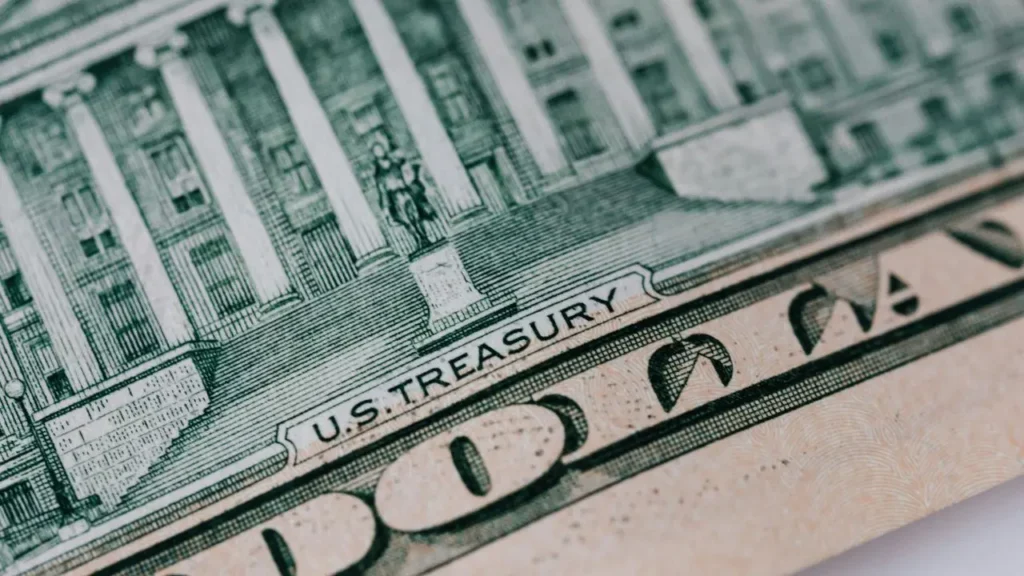
Introduction
The state budget represents all of its resources and expenditures. The bulk of these resources come from taxes paid by citizens and businesses. Expenditures, on the other hand, represent the money the state uses to finance public action: police, justice, research, education, health, etc.
When state expenditure exceeds its revenue, the budget shows a budget deficit, the accumulation of which over the years constitutes the state debt.
I- The US Federal Deficit : Origin and Evolution
In principle, the public deficit and the economic cycle are closely linked. During an expansionary phase, unemployment falls and tax revenues increase, which lowers the public deficit. During a recessionary phase, unemployment rises and tax revenues decrease, which increases the public deficit.
In the case of the American situation the logic is completely different, so, the US budget deficit has continued to worsen despite rising revenues from billions of dollars flowing into US coffers from increased tariffs, revenues that reached a new monthly record in July: $28 billion, an increase of 273% compared to July 2024, according to the Treasury financial manual.
It should be noted that the Donald Trump’s aggressive tariff policy is not without consequences for Americans. In this sense, importing companies are passing on certain costs to consumers.
Thus, the Consumer Price Index data shows an increase in the prices of certain goods sensitive to customs tariffs, such as furniture, footwear, and auto parts. This risks weighing on growth, and therefore tax revenues.
This paradoxical situation of digging budget deficit is explained by expenses increasing faster than revenues.
In this context and during of the 9 months of the year 2025 the amount of the budget deficit reached $1.629 billion, up 7%, or $112 billion, compared to the same period of the previous year. A year that recorded a deficit that exceeded $1.8 trillion, or 6.4% of GDP.
Phowever, this figure was recorded during a period of growth (real growth rate of 2.5%), full employment and no deployment of American troops abroad, which sends a major signal that the United States is experiencing an untenable fiscal situation.
Overall, things have been completely different since the mid-2010s, as the public deficit began to grow steadily while the unemployment rate fell, even reaching a 50-year low in 2023.
II- Understanding the sustainability of public finances
Despite the Trump administration’s tariff policy and budget cuts, it has so far failed to turn things around. The gross national debt now stands at a staggering $37 trillion, or more than $100,000 per capita.
There are several reasons for the widening of the public deficit :
- The aging of the population leads to an increase the costs of Social Security care and health programs, Medicare for the elderly and Medicaid for the poorest;
- The tax cuts implemented by the first Trump administration in 2017 cut into tax revenues.
- The Fed’s monetary tightening has sharply increased interest spending, representing 3.2% of GDP;
- The reduction of corporate tax;
- The soaring retirement budget ;
- Increased military and veterans spending.
Note that the four positions the main areas (defense, retirement, health, and interest) accounted for more than 80% of federal spending. Their budgets are very difficult to cut: health and retirement are taboo subjects that Donald Trump has promised not to touch. Regarding defense, it is far from being the area of reduction, especially since Donald Trump’s desire is to modernize his arsenal and his military system.
Without forgetting the impact of the trade deficit on the deterioration of the budget deficit because it contributes to the increase in debt.
Indeed, and generally speaking, two major theories explain the worsening of the US trade deficit :
- The first simply notes that Americans are living beyond their means by importing more goods than they export ;
- The second, according to Mr. Bernanke, former chairman of the Fed, part of the global savings surplus (Global Savings Glut) that would generate permanent financial flows invested in the asset considered the safest and most liquid on the planet : the US federal government bond. According to this approach, the trade deficit is only the necessary consequence that balances the equation of the American balance of payments.
Moreover, American economist and Nobel Prize winner in economics Joseph Stiglitz proposed taxation of the wealth of the richest as a tool allowing the state to provide itself with the funds necessary to finance the health insurance program for working-class households and consequently reduce the budget deficit.

III- The cost of debt service : a growing burden
Public debt of the United States or American public debt, is the set of financial commitments made in the form of loans by the State as well as public authorities of the United States.
In fact, the American debt is divided into two large parts :
1- Debt held by the public
It represents about 80% of the global debt. It is the debt held mainly by banks, funds, households and also foreign creditors.
2- The debt that the State owes to itself
This type of debt, which represents only almost 20% of the total state debt, is made up mainly of the state’s commitments to funds such as Social Security or Medicare.
Moreover, only the first category of debt has a real economic impact : it is this which affects interest rates and market confidence.
In principle, debt increases each time public spending (investment or operation) is financed by borrowing rather than by taxes, when the balance of public accounts is in deficit.
Typically, high public debt only becomes burden some if interest rates rise more sharply than nominal economic growth.
Besides, the national deficit American is largely explained by the increase in spending which was notably fueled by the increase in interest on the debt.
So the cost of debt service coverage reached $1.01 trillion over the first ten months of fiscal year 2025. At a time when the federal debt recorded a colossal increase of around $36.2 trillion.
It should be noted that in the face of this dizzying increase in debt, a law is regularly passed by Congress to set a debt ceiling. This is the H.J. Res law, promulgated on February 12, 2010, which raises the debt ceiling of the American federal government to 14.3 billion dollars.
A situation which prompted the IMF to express its concern by reporting that the debt to GDP should exceed 122% in 2025, which will be the highest level since the country’s independence, if we exclude the very particular year 2020, which was marked by the covid crisis.
At the same time, the rating agency Moody’s lowered the US sovereign rating to Aa1.
Moreover, this explains the critical level of the indebtedness of the USA is the lack of rigor in the public financial management because of the importance of the dollar in the global economy – which encourages each country to obtain it – and the fact that American debt securities are particularly sought after by investors, as they have long been perceived as a very safe and risk-free refuge, which shows the budgetary irresponsibility of the American Congress, which is incapable of disciplining itself in the face of public spending.
In reality, the US has lost this privilege, as recently, when trying to raise funds from the financial market, it has been faced with low demand, rising yields and nervous markets.
Thus, long-term rates are soaring: the 10-year interest rate rose to 4.4%, and the 30-year rate crossed 5.1%, levels not seen since the early 2000s.
Wall Street is talking about a warning signal that the problem is no longer just quantitative, but also qualitative. This is the sustainability even the American budgetary trajectory is at stake and, with it, the global financial balance
In this context, borrowing is becoming increasingly expensive for the United States, especially since the Fed maintains key interest rates at the current levels of 4.25 and 4.50%, which means that the amount spent on paying interest on the debt is becoming a significant item of public expenditure, to the point, for example, of exceeding that of education.
Conclusion
The US government could, in theory, combat the budget deficit and return to a balanced budget through a policy of boosting growth and productivity.
Indeed, if the economy grows faster than interest rates, the debt burden decreases. However, such a scenario requires structural reforms, a coherent fiscal framework, and sufficient political stability to restore confidence and encourage investment.
